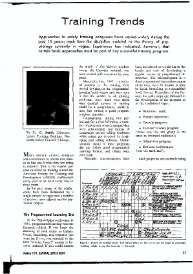Training trends

Contenido multimedia no disponible por derechos de autor o por acceso restringido. Contacte con la institución para más información.
| Tag | 1 | 2 | Valor |
|---|---|---|---|
| LDR | 00000nab a2200000 i 4500 | ||
| 001 | MAP20071017965 | ||
| 003 | MAP | ||
| 005 | 20080418115244.0 | ||
| 007 | hzruuu---uuuu | ||
| 008 | 940317e19770101usa|||| | |00010|eng d | ||
| 040 | $aMAP$bspa | ||
| 084 | $a870 | ||
| 100 | 1 | $0MAPA20080033828$aSmith, L.C. | |
| 245 | 1 | 0 | $aTraining trends$cL.C. Smith |
| 520 | $aApproaches to safety training programs have varied widely during the past 15 years; each time the discipline nodded to the theory of psychology currently in vogue. Experience has indicated, however, that certain basic approaches must be part of any successful training program | ||
| 650 | 1 | 1 | $0MAPA20080629724$aSeguridad e higiene en el trabajo |
| 650 | 1 | 1 | $0MAPA20080550936$aFormación |
| 650 | 1 | 1 | $0MAPA20080608095$aProgramas de seguridad |
| 650 | 1 | 1 | $0MAPA20080546991$aEmpresas |
| 650 | 1 | 1 | $0MAPA20080623302$aOrganización de la seguridad |
| 740 | 0 | $aNational safety news | |
| 773 | 0 | $tNational safety news$dChicago$gVol. 115, nº 1, January 1977 ; p. 41-43 |

